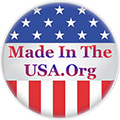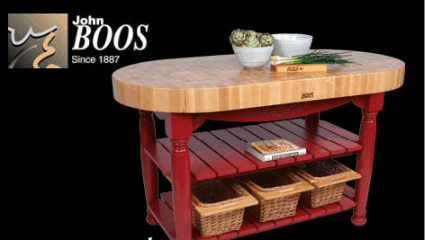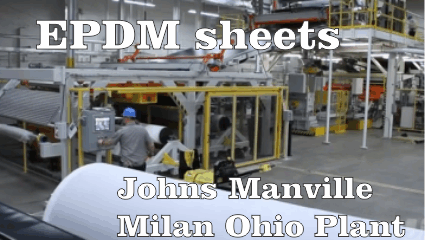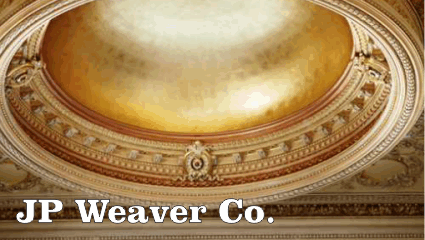Beat your foreign competition by becoming a member!
Join our organization and beat your foreign competition!
The following members sell American Made Products in the Hardware & Building Supplies Category
One of the products Jerk Stopper sells is Made in America Power Cord Savers. A more complete list of their products is provided by Made in America Secrets, to review their list click here.
For more information about Jerk Stopper and its American Made products see the following:
Our mission is simple: To get you to stop jerking your AC power cords and cables causing expensive damage to computers, peripheral devices, video + DSLR cameras as well as audio equipment + musical instruments.
We strive to provide the best products and customer support at the lowest prices possible. We take great pride in our company, our commitment to our customers and all the products we design.
JerkStopper designs and manufactures the majority of our products in the United States and we truly enjoy meeting the needs of our customers. If you have questions, product needs or ideas, please give us a call or email customerservice@JerkStopper.com
Special Orders: We are happy to work with you on custom built devices and special orders. Please contact us at 480-685-4466 or by email at design@JerkStopper.com.
Patent: The JerkStopper is a patented design product. (US Patent No. 7,537,477) JerkStopper? Cable Retention Devices. If you are interested in utilizing, licensing or developing items related to the patent, please contact us at: admin@JerkStopper.com
For more information about Jerk Stopper and its American Made products see the following:
Our mission is simple: To get you to stop jerking your AC power cords and cables causing expensive damage to computers, peripheral devices, video + DSLR cameras as well as audio equipment + musical instruments.
We strive to provide the best products and customer support at the lowest prices possible. We take great pride in our company, our commitment to our customers and all the products we design.
JerkStopper designs and manufactures the majority of our products in the United States and we truly enjoy meeting the needs of our customers. If you have questions, product needs or ideas, please give us a call or email customerservice@JerkStopper.com
Special Orders: We are happy to work with you on custom built devices and special orders. Please contact us at 480-685-4466 or by email at design@JerkStopper.com.
Patent: The JerkStopper is a patented design product. (US Patent No. 7,537,477) JerkStopper? Cable Retention Devices. If you are interested in utilizing, licensing or developing items related to the patent, please contact us at: admin@JerkStopper.com
One of the products JM Corbond sells is Made in America Spray insulations. A more complete list of their products is provided by Made in America Secrets, to review their list click here.
For more information about JM Corbond and its American Made products see the following:
JM has become synonymous with innovation and quality in the building and specialty materials industry. Explore who we are, where we've been and what's new in innovation.
We build environments?. For more than 150 years, Johns Manville has focused on developing materials to make diverse environments stronger, more durable, and more energy efficient and comfortable. We manufacture premium-quality building and mechanical insulation, commercial roofing, glass fibers and nonwoven materials for commercial, industrial and residential applications. JM products are used in a wide variety of industries including building products, aerospace, automotive and transportation, filtration, commercial interiors, waterproofing and wind energy.
Through our 7,000 global employees, JM provides products to more than 85 countries and operates 45 manufacturing facilities in North America, Europe, and China. Since 1988, JM's global headquarters has been located in downtown Denver.
For more information about JM Corbond and its American Made products see the following:
JM has become synonymous with innovation and quality in the building and specialty materials industry. Explore who we are, where we've been and what's new in innovation.
We build environments?. For more than 150 years, Johns Manville has focused on developing materials to make diverse environments stronger, more durable, and more energy efficient and comfortable. We manufacture premium-quality building and mechanical insulation, commercial roofing, glass fibers and nonwoven materials for commercial, industrial and residential applications. JM products are used in a wide variety of industries including building products, aerospace, automotive and transportation, filtration, commercial interiors, waterproofing and wind energy.
Through our 7,000 global employees, JM provides products to more than 85 countries and operates 45 manufacturing facilities in North America, Europe, and China. Since 1988, JM's global headquarters has been located in downtown Denver.
One of the products John Boos sells is American Made Sinks. A more complete list of their products is provided by Made in America Secrets, to review their list click here.
For more information about John Boos and its Made in America products see the following:
With over 125 years of adaptation to the markets, John Boos & Co. has become a primary provider of gourmet products and foodservice equipment throughout the industry. We have the capabilities of both wood and metal manufacturing all at the same location. This ability to fabricate and manufacture both wood and metal, gives us a large variety of opportunities to expand our product offerings to our customers in the foodservice industry.
JBC - CRAFTSMANSHIP WOOD
The Leading Manufacturer of Wood Production:
? Butcher Blocks
? Cutting Boards
? Gourmet Furnishing
? Kitchen Counter Tops
? Work Tables
? Much More!
JBC - CRAFTSMANSHIP METAL
The Leading Manufacturer of Stainless Steel Production:
? Dishtables
? Custom Fabrication
? Sinks
? Work Tables
? Shelving
? Much More!
conrad boos
How It All Started
John Boos & Co., based in Effingham, IL is one of the oldest manufacturers of premium quality foodservice equipment and butcher blocks in the U.S.A. Boos has been in business continuously since 1887. It was in his Effingham, IL blacksmith shop that founder, Conrad Boos first invented what would become the original Boos Block?. Having harvested sycamore from local wooded areas, and processed it in his sawmill, Conrad brought it to his blacksmith shop for finishing. That first block of sycamore slab placed on three legs evolved with sheer purpose of a block to absorb the shock of this smith's hammer against the anvil. It was the local butcher, who having seen and admired Conrad's block, became impassioned about owning a block for his meat market. Unknowingly, Conrad's son, John, who having made and sold that first block to the local butcher, took John Boos & Co. into the infancy of the 125 year reign of serving customers in the commercial market sector.
conrad boos
The Early Years
In 1892, Adelbert Gravenhorst, a German immigrant and enterprising businessman saw the potential of this innovation and joined Conrad and John Boos to incorporate John Boos & Co. He provided the investment needed for manufacturing the butcher block to meet the growing demand of commercial meat markets.
As a single product (die block) manufacturer in the early years of John Boos & Co., there became a single minded focus: to make the best die blocks in the world. One of the early company mottos was Wherever steel meets wood, Boos is Best! True to the motto, John Boos & Co. sent product for display at the World's Fair in Paris, 1900.
During WWII, John Boos & Co. proved its ingenuity and adaptability to manufacture foodservice worktables and tabletops for the U.S. Army, Navy, and Marine mess halls and kitchens. The company emerged from the war era with a new manufacturing philosophy, service culture, and expanded product lines. Boos butcher block tops grew out of the old fashioned Boos butcher block to meet the growing requirements of the foodservice industry and the residential markets.
Beginning in the mid 1960's, John Boos & Co. further expanded the growth of its stainless steel fabrication. Ever changing to accommodate the market requirements, the company's manufacturing expanded to include an entire range of stainless products. The company combined North American hard rock maple and foodservice grade stainless steel to begin its blended offering of commercial quality carts and work tables. John Boos & Co. currently continues to be the only company in the U.S.A that has both stainless steel fabrication and wood manufacturing facilities in one location.
Reels of Change
With over 100 years of adaptation to the markets, the late 1900's presented yet many new opportunities. Events during this era created the catalyst to shape John Boos & Co. as a primary provider of gourmet products and foodservice equipment.
Major catalog and retail store exposure with many of the renowned companies in the kitchen specialty markets promoted growth of the Boos furniture and cutting board lines. Cooking shows gained popularity and Boos Block ? cutting boards were front and center stage. During the same era, Dr. Dean Cliver renewed interest in wood cutting boards with his Sanitation Study ? Wood vs. Plastic!
On the commercial front of the business, John Boos & Co. began further expansion of stainless steel fabrication with the manufacturing of stainless steel sinks for one of the largest supermarket chains in the U.S.A. The chain remains an important customer still to this day.
With a broader scope of manufacturing capabilities to the foodservice trade, the avenue was paved for John Boos & Co. to begin the roll-out of stainless equipment for stadiums and arenas. The stadium concession stands were equipped with stainless products. Several years later, Boos Block ? hard rock maple cutting boards and commercial butcher block tops would find their way into the same venues.
John Boos & Co. launched www.johnboos.com in the 90's and began their growing product market on-line. Boos customers began marketing and selling these same products through their own web sites.
The Current Picture
As John Boos & Co. celebrates over 125 years of continuous business, they stand with strength built on a block of American history. The well recognized gourmet Boos Block ? brand has become significant to the heritage and reputation. Having adapted to market changes through the years, the company continues to grow in its service to the gourmet, foodservice, residential, supermarket, and industrial markets.
During the 125th anniversary year of John Boos & Co., the company has expanded with a move to a new corporate office location combined with a new metal plant facility in Effingham, IL. The new facility at nearly 87,000 square feet, located on over 12 acres of property will allow us to grow forward with relocating our current Effingham wood plant facility and on-site kilns to the same new location within the next few years.
Joe Emmerich, President of John Boos & Co., states: Visionary leaders have fostered John Boos & Co. success every step of the way. The changes in America's history are built-in incentive for our company to be very open and flexible to the same degree of change.
For more information about John Boos and its Made in America products see the following:
With over 125 years of adaptation to the markets, John Boos & Co. has become a primary provider of gourmet products and foodservice equipment throughout the industry. We have the capabilities of both wood and metal manufacturing all at the same location. This ability to fabricate and manufacture both wood and metal, gives us a large variety of opportunities to expand our product offerings to our customers in the foodservice industry.
JBC - CRAFTSMANSHIP WOOD
The Leading Manufacturer of Wood Production:
? Butcher Blocks
? Cutting Boards
? Gourmet Furnishing
? Kitchen Counter Tops
? Work Tables
? Much More!
JBC - CRAFTSMANSHIP METAL
The Leading Manufacturer of Stainless Steel Production:
? Dishtables
? Custom Fabrication
? Sinks
? Work Tables
? Shelving
? Much More!
conrad boos
How It All Started
John Boos & Co., based in Effingham, IL is one of the oldest manufacturers of premium quality foodservice equipment and butcher blocks in the U.S.A. Boos has been in business continuously since 1887. It was in his Effingham, IL blacksmith shop that founder, Conrad Boos first invented what would become the original Boos Block?. Having harvested sycamore from local wooded areas, and processed it in his sawmill, Conrad brought it to his blacksmith shop for finishing. That first block of sycamore slab placed on three legs evolved with sheer purpose of a block to absorb the shock of this smith's hammer against the anvil. It was the local butcher, who having seen and admired Conrad's block, became impassioned about owning a block for his meat market. Unknowingly, Conrad's son, John, who having made and sold that first block to the local butcher, took John Boos & Co. into the infancy of the 125 year reign of serving customers in the commercial market sector.
conrad boos
The Early Years
In 1892, Adelbert Gravenhorst, a German immigrant and enterprising businessman saw the potential of this innovation and joined Conrad and John Boos to incorporate John Boos & Co. He provided the investment needed for manufacturing the butcher block to meet the growing demand of commercial meat markets.
As a single product (die block) manufacturer in the early years of John Boos & Co., there became a single minded focus: to make the best die blocks in the world. One of the early company mottos was Wherever steel meets wood, Boos is Best! True to the motto, John Boos & Co. sent product for display at the World's Fair in Paris, 1900.
During WWII, John Boos & Co. proved its ingenuity and adaptability to manufacture foodservice worktables and tabletops for the U.S. Army, Navy, and Marine mess halls and kitchens. The company emerged from the war era with a new manufacturing philosophy, service culture, and expanded product lines. Boos butcher block tops grew out of the old fashioned Boos butcher block to meet the growing requirements of the foodservice industry and the residential markets.
Beginning in the mid 1960's, John Boos & Co. further expanded the growth of its stainless steel fabrication. Ever changing to accommodate the market requirements, the company's manufacturing expanded to include an entire range of stainless products. The company combined North American hard rock maple and foodservice grade stainless steel to begin its blended offering of commercial quality carts and work tables. John Boos & Co. currently continues to be the only company in the U.S.A that has both stainless steel fabrication and wood manufacturing facilities in one location.
Reels of Change
With over 100 years of adaptation to the markets, the late 1900's presented yet many new opportunities. Events during this era created the catalyst to shape John Boos & Co. as a primary provider of gourmet products and foodservice equipment.
Major catalog and retail store exposure with many of the renowned companies in the kitchen specialty markets promoted growth of the Boos furniture and cutting board lines. Cooking shows gained popularity and Boos Block ? cutting boards were front and center stage. During the same era, Dr. Dean Cliver renewed interest in wood cutting boards with his Sanitation Study ? Wood vs. Plastic!
On the commercial front of the business, John Boos & Co. began further expansion of stainless steel fabrication with the manufacturing of stainless steel sinks for one of the largest supermarket chains in the U.S.A. The chain remains an important customer still to this day.
With a broader scope of manufacturing capabilities to the foodservice trade, the avenue was paved for John Boos & Co. to begin the roll-out of stainless equipment for stadiums and arenas. The stadium concession stands were equipped with stainless products. Several years later, Boos Block ? hard rock maple cutting boards and commercial butcher block tops would find their way into the same venues.
John Boos & Co. launched www.johnboos.com in the 90's and began their growing product market on-line. Boos customers began marketing and selling these same products through their own web sites.
The Current Picture
As John Boos & Co. celebrates over 125 years of continuous business, they stand with strength built on a block of American history. The well recognized gourmet Boos Block ? brand has become significant to the heritage and reputation. Having adapted to market changes through the years, the company continues to grow in its service to the gourmet, foodservice, residential, supermarket, and industrial markets.
During the 125th anniversary year of John Boos & Co., the company has expanded with a move to a new corporate office location combined with a new metal plant facility in Effingham, IL. The new facility at nearly 87,000 square feet, located on over 12 acres of property will allow us to grow forward with relocating our current Effingham wood plant facility and on-site kilns to the same new location within the next few years.
Joe Emmerich, President of John Boos & Co., states: Visionary leaders have fostered John Boos & Co. success every step of the way. The changes in America's history are built-in incentive for our company to be very open and flexible to the same degree of change.
One of the products Johns Manville sells is Made in America Duct Liners. A more complete list of their products is provided by Made in America Secrets, to review their list click here.
For more information about Johns Manville and its American Made products see the following:
JM has become synonymous with innovation and quality in the building and specialty materials industry. Explore who we are, where we've been and what's new in innovation.
We build environments?. For more than 150 years, Johns Manville has focused on developing materials to make diverse environments stronger, more durable, and more energy efficient and comfortable. We manufacture premium-quality building and mechanical insulation, commercial roofing, glass fibers and nonwoven materials for commercial, industrial and residential applications. JM products are used in a wide variety of industries including building products, aerospace, automotive and transportation, filtration, commercial interiors, waterproofing and wind energy.
Through our 7,000 global employees, JM provides products to more than 85 countries and operates 45 manufacturing facilities in North America, Europe, and China. Since 1988, JM's global headquarters has been located in downtown Denver.
For more information about Johns Manville and its American Made products see the following:
JM has become synonymous with innovation and quality in the building and specialty materials industry. Explore who we are, where we've been and what's new in innovation.
We build environments?. For more than 150 years, Johns Manville has focused on developing materials to make diverse environments stronger, more durable, and more energy efficient and comfortable. We manufacture premium-quality building and mechanical insulation, commercial roofing, glass fibers and nonwoven materials for commercial, industrial and residential applications. JM products are used in a wide variety of industries including building products, aerospace, automotive and transportation, filtration, commercial interiors, waterproofing and wind energy.
Through our 7,000 global employees, JM provides products to more than 85 countries and operates 45 manufacturing facilities in North America, Europe, and China. Since 1988, JM's global headquarters has been located in downtown Denver.
One of the products JP Weaver sells is Made in America Architectural Moldings. A more complete list of their products is provided by Made in America Secrets, to review their list click here.
For more information about JP Weaver and its Made in the USA products see the following:
Early History and Renaissance. Press-molded decoration has been used with various soft plastic materials for centuries. For example, it is known that medieval sculptors press-molded organic mixtures to decorate painted sculptures. But because mixtures based on organic binders such as glue, oil, resins, and waxes are prone to various sorts of degradation, actual survivors are rare.
The direct ancestors of the composition craft are most likely found in the Italian Renaissance, however, composition mixtures were not extensively used for architectural decoration during this period, probably due to building traditions as well as relative expense. It is worth nothing that this was an age of experimentation with materials and rediscovery of Greek and Roman designs. Press molded mixtures called pastiglias were used to decorate wooden boxes and picture frames as early as the 14th century. Moldable compositions were discussed by various Renaissance writers. The recipes are extremely varied and include, among their more common and understandable ingredients, gypsum, lead carbonate, wood and marble dust, eggs, pigments, sheep's wool, and various oils and resins.
The 18th Century. The first flowering of architectural composition in America took place at the end of the 18th century when ornaments were both imported from England and produced by makers in every major eastern city. All of the conditions were right: molding technologies were well established (architectural papier mache, which, like composition, was produced in molds, had gained widespread acceptance during the middle decades of the century). The raw materials were produced or imported in volume, so the cost of the composition ingredients came down as the cost and availability of highly skilled labor went up. Economic and social conditions favored centralized manufactories in the production of various arts and crafts.
Design trends also fed into a favorable reception for composition. A more faithful reinterpretation of Greek and Roman design eventually termed Neoclassical had taken hold in Europe, championed in England by the architect, Robert Adam, after his return from study in Italy in 1758. Although Adam played no direct role in the invention of composition ornament, as has sometimes been said, he patronized English craftsmen who were making it and was generally receptive to new and innovative materials. One early maker, sometimes cited as the inventor of composition by his contemporaries, was John Jaques. His name appears in London advertising by 1785, but he was probably in business before then.
As a result of Adam's influence, designers of applied ornament in both Europe and America began to take advantage of a molding process that was ideally suited to producing the detailed, but repetitive, motifs of classical decoration--acanthus leaf, egg and dart, festoons, swags, and paterae--as well as classical themes depicting Greek and Roman gods and goddesses. And as the Neoclassical style became more popular, composition ornament makers increased in number.
drawing from manufacturer's catalog
Festoons and fabric swags in composition ornament are shown from a manufacturer's catalog. The company, established in 1893, is still in business today. Photo: Courtesy, Decorators Supply Corporation.
The 19th Century. During the early decades of the nineteenth century, Neoclassical--encompassed in America by the terms Federal, Empire, and Greek Revival--was in the ascendancy. Composition makers continued to increase and also to find new uses for their material. Composition picture and mirror frames became common and some makers advertised the suitability of composition ornaments for casting iron firebacks and stoves. Composition ornament was explicitly advertised for exterior use as well, although very little has survived. The interiors of houses and public buildings in every prosperous American city were decorated with composition.
When the classically derived Federal and Empire styles gave way to the various revival styles-Rococo, Gothic, Renaissance, and Italianate-composition makers simply made new molds to accommodate them. (Although Rococo and Renaissance styles were not common for architecture in America, they were common for furnishings and interior decoration and, in consequence, for composition ornament.)
Along with a proliferation of styles in the mid-to-late decades of the century, there was a parallel growth in the number of moldable and castable materials that shared some features of the composition craft, such as carton pierre, gutta percha, fibrous plaster, shellac compositions and, eventually, celluloid and hard rubber. Composition continued to be the preferred material for detailed decoration on wood where the size of the ornament did not make its cost prohibitive. The publication of practical books by and for craftsmen, beginning in the 19th century, disseminated recipes and procedures to a broad audience and de-mystified the craft. Period composition ornaments called imitation wood carvings were widely advertised in manufacturers' catalogs. Balls of prepared compo became available from some art supply shops in large cities for use by small volume craftsmen.
During the later years of the century, the Arts and Crafts Movement-as preached by William Morris and his associates and followers-became increasingly important in design and philosophy. Morris stressed honesty to the material in design, exalted spirituality of hand work and rejected manufacturing, mass production and the distinction between high art and craft. These trends were to affect both technology and design in the 20th century. Composition ornament would have been anathema to Morris and his elite clients, most composition production during the last years of the century is best described as Victorian Eclectic.
The 20th Century. The Arts and Crafts and related styles, such as the more decorative Art Nouveau, were well rooted in America by the beginning of the century. Pitch molds made from relief-carved patterns had become common in America. The carving tool marks could be accentuated in these patterns in keeping with current vogue. Open-grained woods, such as mahogany, were often chosen so that the finished composition ornaments would have a wood-like grain that showed through stains and varnishes. A uniquely 20th century application of composition ornament was in the lavishly decorated movie palaces of the Depression era.
As interest in architectural embellishments declined, particularly as a result of the austere post-World War II styles, so did the composition trade.
contemporary studio of J.P. Weaver Co.
Shown is the contemporary studio of J.P. Weaver Company. It has manufactured and sold architectural composition ornament continuously since 1917. Photo: Lenna Tyler Kast.
Many old firms went out of business and their molds were dispersed or destroyed. The few that remained concentrated on restoration projects or were sustained by diversification into other materials. By the 1950s and 60s, composition as a material and craft had been all but forgotten.
An upsurge in hand craft production that started in the late 60s and has continued to the present-as well as increasing interest in historic preservation-has led to the renewed study of old methods and materials, including composition. The few manufacturers that remain have seen a large increase in their business, and an increasing number of people recognize composition as a unique ornamental material and want to conserve, restore, or create it.
For more information about JP Weaver and its Made in the USA products see the following:
Early History and Renaissance. Press-molded decoration has been used with various soft plastic materials for centuries. For example, it is known that medieval sculptors press-molded organic mixtures to decorate painted sculptures. But because mixtures based on organic binders such as glue, oil, resins, and waxes are prone to various sorts of degradation, actual survivors are rare.
The direct ancestors of the composition craft are most likely found in the Italian Renaissance, however, composition mixtures were not extensively used for architectural decoration during this period, probably due to building traditions as well as relative expense. It is worth nothing that this was an age of experimentation with materials and rediscovery of Greek and Roman designs. Press molded mixtures called pastiglias were used to decorate wooden boxes and picture frames as early as the 14th century. Moldable compositions were discussed by various Renaissance writers. The recipes are extremely varied and include, among their more common and understandable ingredients, gypsum, lead carbonate, wood and marble dust, eggs, pigments, sheep's wool, and various oils and resins.
The 18th Century. The first flowering of architectural composition in America took place at the end of the 18th century when ornaments were both imported from England and produced by makers in every major eastern city. All of the conditions were right: molding technologies were well established (architectural papier mache, which, like composition, was produced in molds, had gained widespread acceptance during the middle decades of the century). The raw materials were produced or imported in volume, so the cost of the composition ingredients came down as the cost and availability of highly skilled labor went up. Economic and social conditions favored centralized manufactories in the production of various arts and crafts.
Design trends also fed into a favorable reception for composition. A more faithful reinterpretation of Greek and Roman design eventually termed Neoclassical had taken hold in Europe, championed in England by the architect, Robert Adam, after his return from study in Italy in 1758. Although Adam played no direct role in the invention of composition ornament, as has sometimes been said, he patronized English craftsmen who were making it and was generally receptive to new and innovative materials. One early maker, sometimes cited as the inventor of composition by his contemporaries, was John Jaques. His name appears in London advertising by 1785, but he was probably in business before then.
As a result of Adam's influence, designers of applied ornament in both Europe and America began to take advantage of a molding process that was ideally suited to producing the detailed, but repetitive, motifs of classical decoration--acanthus leaf, egg and dart, festoons, swags, and paterae--as well as classical themes depicting Greek and Roman gods and goddesses. And as the Neoclassical style became more popular, composition ornament makers increased in number.
drawing from manufacturer's catalog
Festoons and fabric swags in composition ornament are shown from a manufacturer's catalog. The company, established in 1893, is still in business today. Photo: Courtesy, Decorators Supply Corporation.
The 19th Century. During the early decades of the nineteenth century, Neoclassical--encompassed in America by the terms Federal, Empire, and Greek Revival--was in the ascendancy. Composition makers continued to increase and also to find new uses for their material. Composition picture and mirror frames became common and some makers advertised the suitability of composition ornaments for casting iron firebacks and stoves. Composition ornament was explicitly advertised for exterior use as well, although very little has survived. The interiors of houses and public buildings in every prosperous American city were decorated with composition.
When the classically derived Federal and Empire styles gave way to the various revival styles-Rococo, Gothic, Renaissance, and Italianate-composition makers simply made new molds to accommodate them. (Although Rococo and Renaissance styles were not common for architecture in America, they were common for furnishings and interior decoration and, in consequence, for composition ornament.)
Along with a proliferation of styles in the mid-to-late decades of the century, there was a parallel growth in the number of moldable and castable materials that shared some features of the composition craft, such as carton pierre, gutta percha, fibrous plaster, shellac compositions and, eventually, celluloid and hard rubber. Composition continued to be the preferred material for detailed decoration on wood where the size of the ornament did not make its cost prohibitive. The publication of practical books by and for craftsmen, beginning in the 19th century, disseminated recipes and procedures to a broad audience and de-mystified the craft. Period composition ornaments called imitation wood carvings were widely advertised in manufacturers' catalogs. Balls of prepared compo became available from some art supply shops in large cities for use by small volume craftsmen.
During the later years of the century, the Arts and Crafts Movement-as preached by William Morris and his associates and followers-became increasingly important in design and philosophy. Morris stressed honesty to the material in design, exalted spirituality of hand work and rejected manufacturing, mass production and the distinction between high art and craft. These trends were to affect both technology and design in the 20th century. Composition ornament would have been anathema to Morris and his elite clients, most composition production during the last years of the century is best described as Victorian Eclectic.
The 20th Century. The Arts and Crafts and related styles, such as the more decorative Art Nouveau, were well rooted in America by the beginning of the century. Pitch molds made from relief-carved patterns had become common in America. The carving tool marks could be accentuated in these patterns in keeping with current vogue. Open-grained woods, such as mahogany, were often chosen so that the finished composition ornaments would have a wood-like grain that showed through stains and varnishes. A uniquely 20th century application of composition ornament was in the lavishly decorated movie palaces of the Depression era.
As interest in architectural embellishments declined, particularly as a result of the austere post-World War II styles, so did the composition trade.
contemporary studio of J.P. Weaver Co.
Shown is the contemporary studio of J.P. Weaver Company. It has manufactured and sold architectural composition ornament continuously since 1917. Photo: Lenna Tyler Kast.
Many old firms went out of business and their molds were dispersed or destroyed. The few that remained concentrated on restoration projects or were sustained by diversification into other materials. By the 1950s and 60s, composition as a material and craft had been all but forgotten.
An upsurge in hand craft production that started in the late 60s and has continued to the present-as well as increasing interest in historic preservation-has led to the renewed study of old methods and materials, including composition. The few manufacturers that remain have seen a large increase in their business, and an increasing number of people recognize composition as a unique ornamental material and want to conserve, restore, or create it.






